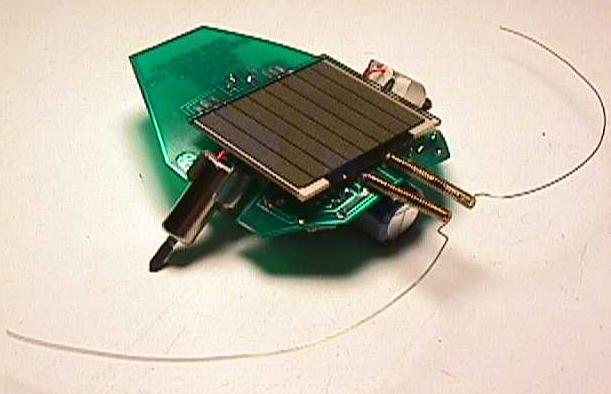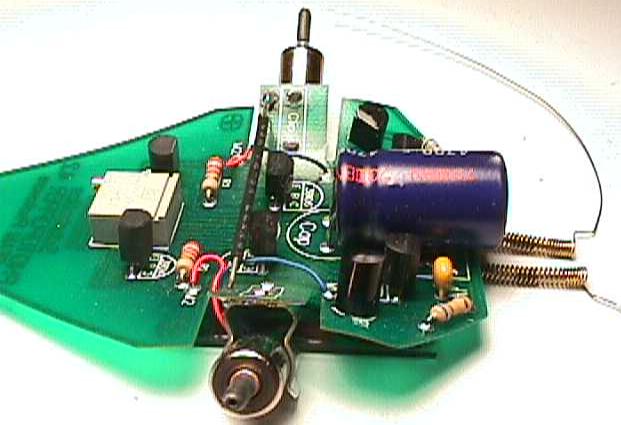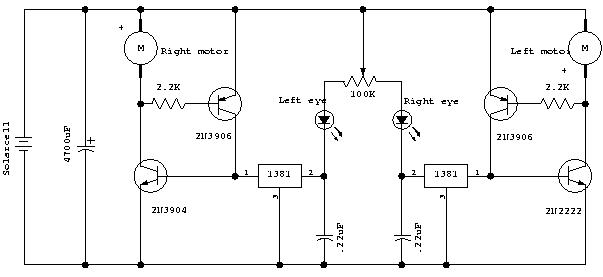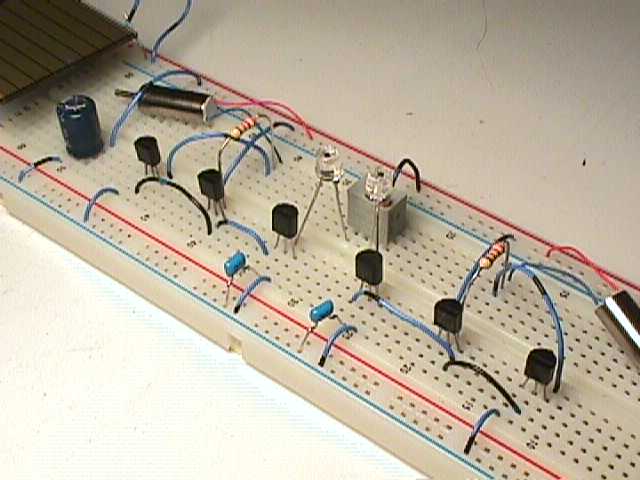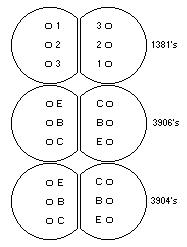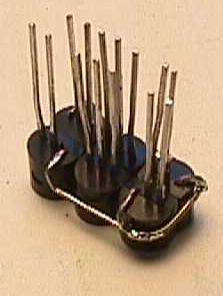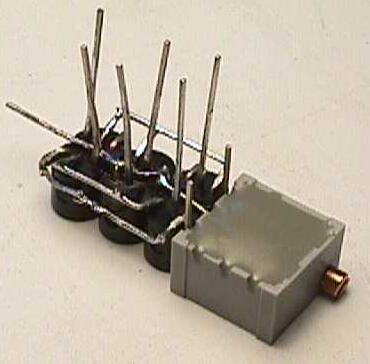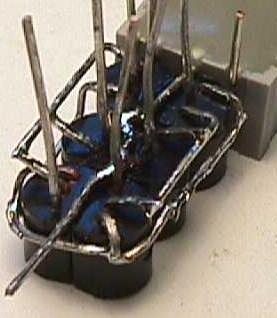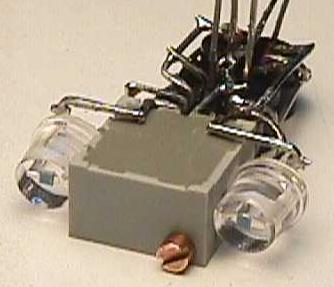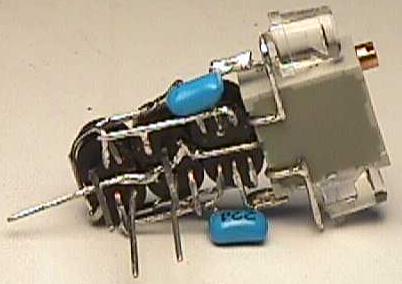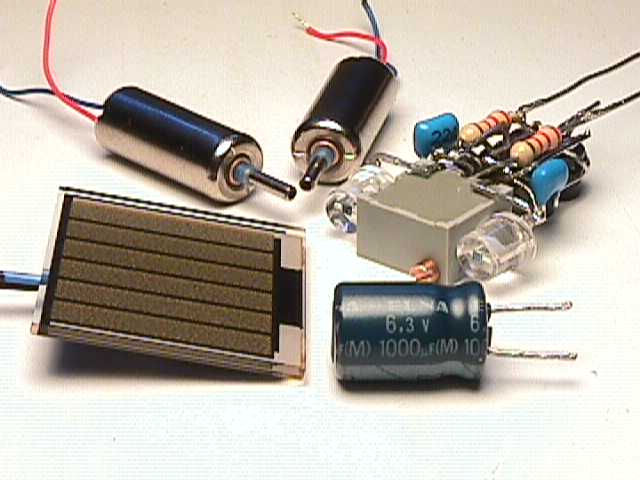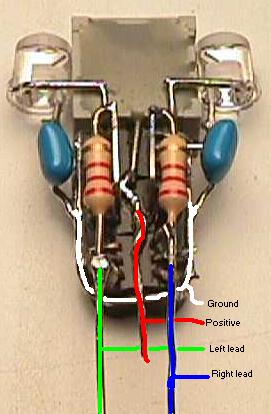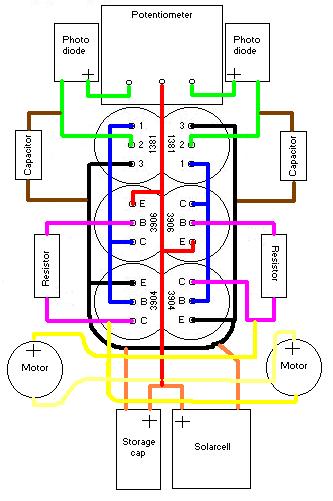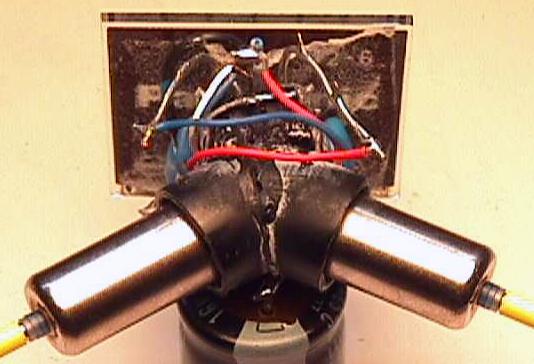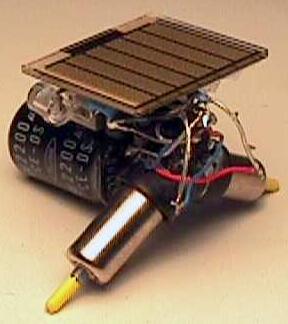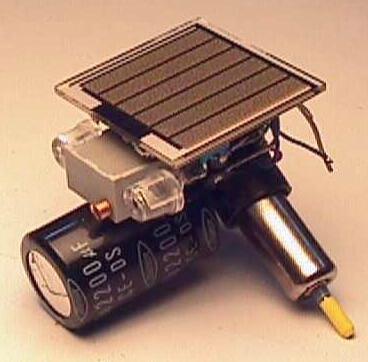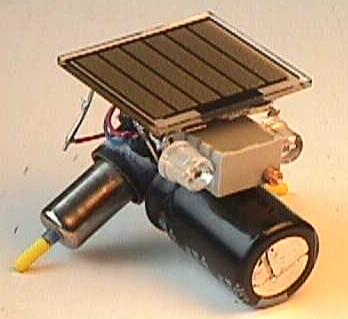To:beam@corp.sgi.com
Lesson 101 on how to check your Photopopper:
Preamble: Before doing ANY of the following, sit down with your soldering
iron and re-touch all the solder connections. We find that 90% of the
returns to Solarbotics are fixed in under 30 seconds with nothing more than
a soldering iron and some solder to fix bad solder joints. DO IT. Don't
think "He can't mean _MY_ solder connections". Yup, I do. I have seen poor
solder joints on every returned item from somebody who INSISTED that their
soldering is perfect. Another thing - do not be quick to blame your
problems on a faulty component. I have seen exactly 3 bad transistors
_ever_. And NEVER a bad 1381. With that said, let's begin.
Step 1 - Preparation: Didja mount tactile (touch) sensors on it? Remove
them. It cuts down on the complexity of the debugging task.
Step 2 - 1381 testing: If it is running in circles (as it most likely is),
that indicates one side is obviously dead, or seriously mistuned. Crank
your trimpot all one way - do you hear a slight buzzing? No? Crank it the
other way. Still no buzzing? That means there's a problem with the
circuitry to the 1381. Inspect your power and ground connections to the 1381.
If you hear buzzing, that means the 1381 is trying to trigger, but the
solarengine isn't activating. No buzzing = no 1381 action.
Step 2a - 1381 testing, part deux: Run a jumper from the Vcc (positive) of
your main cap or solarcell to the middle leg of the suspect 1381. This will
effectively bypass all sensory inputs, and FORCE that 1381 to be the one
that will trigger, everytime. Does it work now? Check the IR photodiode -
may be in backwards. Did you forget to install the cap for the 1381? Is the
1381 itself in backwards?
What, it still doesn't work? Even after checking that there's a positive
voltage on the middle pin of the 1381, and ground to the right-side pin
(viewed pins down, text/flat side facing you)? Hmm. Must be the solarengine
Step 3 - Solarengine testing: Run a wire from positive and _tap_ the middle
leg pad of the 3904. Do this a few times while watching the motor. Does it
make the motor spin? That's a good sign. Now notice carefully - does it
spin a bit longer after you remove the wire? Good, that means the
Solarengine portion of the circuit is working properly. If it only works
while you are holding the wire to the middle (base) leg of the 3904, that
means the circuit isn't latching, or staying on. Your 3906 should be inspected.
If you have not found your problem by now, start reinspecting your
handiwork for obvious flaws like a blob of solder bridging solder pads, or
improperly installed components. Did you use glue to install the
electronics? Yes, I have seen this. It doesn't work. So don't do it.
Regards,
Dave
---------------------------------------------------------------
"Um, no - that's H,R,Y,N,K,I,W. No, not K,I,U,U, K,I,_W_. Yes,
that's right. Yes, I know it looks like "HOCKYRINK." Yup, only
2 vowels. Pronounciation? _SMITH_".
http://www.solarbotics.com